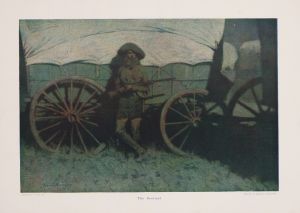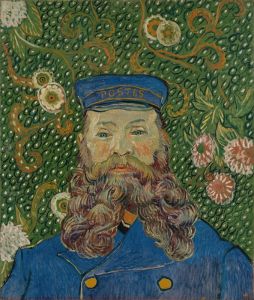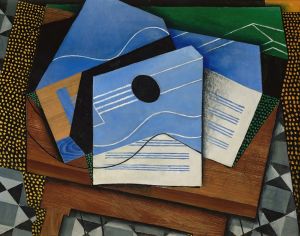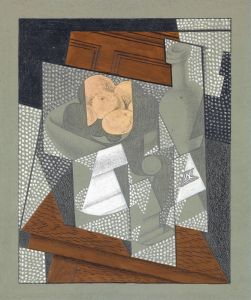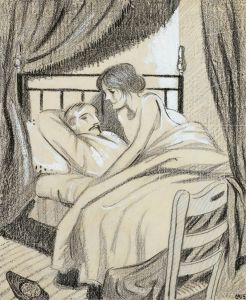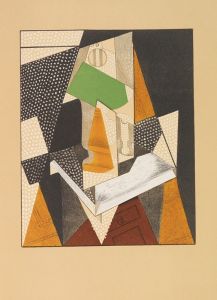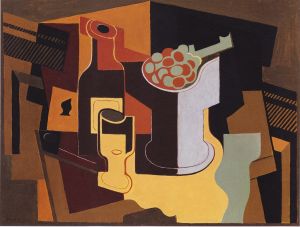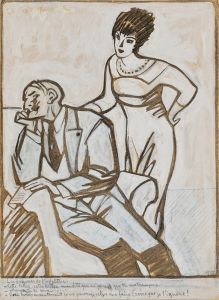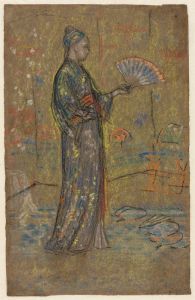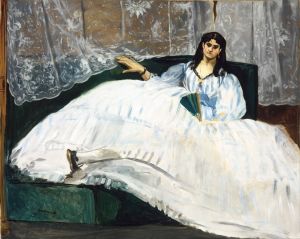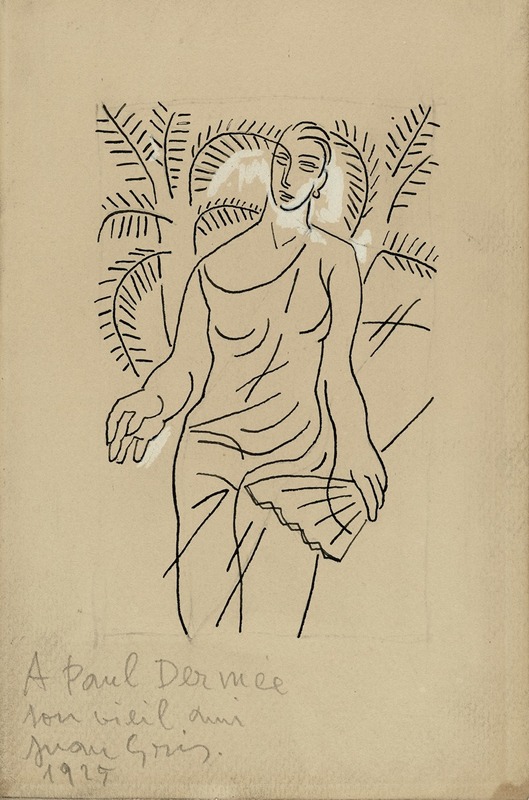
Femme à l’ éventail
A hand-painted replica of Juan Gris’s masterpiece Femme à l’ éventail, meticulously crafted by professional artists to capture the true essence of the original. Each piece is created with museum-quality canvas and rare mineral pigments, carefully painted by experienced artists with delicate brushstrokes and rich, layered colors to perfectly recreate the texture of the original artwork. Unlike machine-printed reproductions, this hand-painted version brings the painting to life, infused with the artist’s emotions and skill in every stroke. Whether for personal collection or home decoration, it instantly elevates the artistic atmosphere of any space.
"Femme à l’éventail" is a painting by the Spanish artist Juan Gris, a prominent figure in the Cubist movement. Gris, born in Madrid in 1887, moved to Paris in 1906, where he became associated with the avant-garde art scene, including artists like Pablo Picasso and Georges Braque. His work is known for its distinctive style that combines elements of Cubism with a unique sense of color and composition.
"Femme à l’éventail," which translates to "Woman with a Fan," is one of Gris's notable works that exemplifies his mature Cubist style. Painted in 1916, this piece reflects Gris's interest in depicting everyday objects and figures through the lens of Cubism, a movement characterized by fragmented forms and multiple perspectives.
In "Femme à l’éventail," Gris employs a palette of muted colors, including shades of gray, brown, and blue, which is typical of his work during this period. The composition is structured with geometric precision, showcasing Gris's ability to balance abstraction with recognizable forms. The painting depicts a woman holding a fan, a common motif in art that suggests elegance and leisure. However, Gris's interpretation is far from traditional; the woman's form is broken into a series of interlocking planes and facets, a hallmark of Cubist aesthetics.
Gris's approach to Cubism was distinct from that of his contemporaries. While Picasso and Braque often focused on monochromatic palettes and a more austere style, Gris introduced a sense of harmony and clarity to his compositions. His use of color and light gives "Femme à l’éventail" a sense of depth and vibrancy, despite its abstracted form. This painting, like many of Gris's works, demonstrates his interest in the interplay between flatness and volume, as well as his meticulous attention to the arrangement of shapes and colors.
The painting is also notable for its exploration of texture and surface. Gris often incorporated elements of collage into his work, and while "Femme à l’éventail" is a painted piece, it reflects his interest in the tactile qualities of materials. The surface of the painting is carefully modulated to suggest different textures, from the smoothness of the fan to the patterned fabric of the woman's attire.
"Femme à l’éventail" is housed in the Thyssen-Bornemisza Museum in Madrid, where it is part of a significant collection of 20th-century art. The painting is an important example of Gris's contribution to Cubism and his role in the broader context of modern art. Through works like this, Gris helped to expand the possibilities of visual representation, challenging viewers to reconsider the relationship between reality and abstraction.
Overall, "Femme à l’éventail" is a testament to Juan Gris's innovative spirit and his ability to synthesize form, color, and composition into a cohesive and compelling visual language. His work continues to be celebrated for its intellectual rigor and aesthetic beauty, securing his place as a key figure in the history of modern art.





